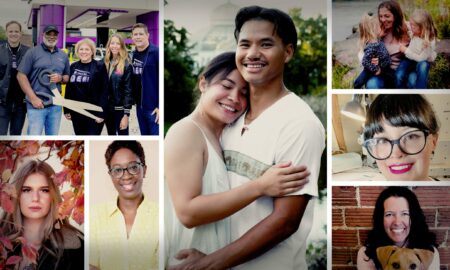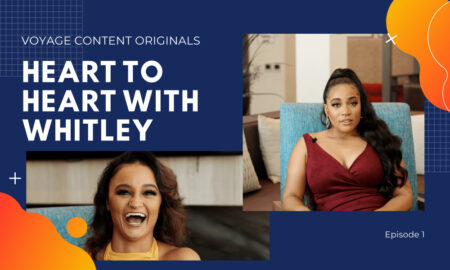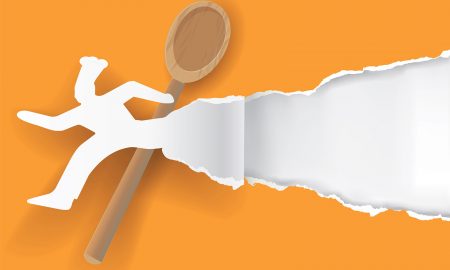

Today we’d like to introduce you to Lisa Boyd And Miré Regulus.
Lisa Boyd and Miré Regulus, we appreciate you taking the time to share your story with us today. Where does your story begin?
Miré
I’ve lived in the Twin Cities for more than 30 years, and my job path has been very indirect. I was in food and beverage hospitality for 20+ years, I’ve worked at community engagement/community building for more than 10 years, and I’ve had a creative/artistic practice since my 20s. My work has very much been about curiosity, discovery, and relationships between people. I keep exploring and digging into new ideas because my curiosity won’t quit. Now I live engaged in a mix of all those things. My desire is to build connections between people, focusing on how we take care of each other.
Lisa
I’m going to tell my story backwards because, for the work I’m doing now in community building, I feel like everything has led me here and I’m finally doing the work that I was meant to be doing – investing in my community and helping create really beautiful things here. Before I started working on the Lake Street Alignment Project, I spent almost 12 years in food security working for a food bank, which is helping people but not really addressing the root causes of the problems. Before that, I spent 10 years in senior housing, including some time working on affordable senior housing. Before that, I was working internationally over a 12-year period. Moving forward from that point, I was in the Peace Corps in Central Africa, then I was in graduate school in international development. Then I worked in the former Soviet Republics of Armenia and Georgia. And then I came back to the U.S. to work for an international animal conservation organization. Finally I decided I really needed to settle in Minneapolis, where I’d lived before. (My very first job out of college was in Minneapolis.) So after my long and winding road, I came back to my chosen city and I am thrilled to be doing work that directly nurtures the things that made me fall in love with this city in the first place.
Lake Street Alignment
In 2021, after the murder of George Floyd and the uprising with support from McKnight Foundation, we brought together a core team of people to launch something bold—a process, focused on ground-level perspectives, to reimagine Lake Street and its rebuilding with racial, economic, and environmental justice at its core. We saw this as a once-in-a-lifetime opportunity to define a new model for community development that addresses deeper issues of systemic racism, that rights historical wrongs, and that closes racial gaps in income and wealth. We were in conversation with over 400 people, and worked to identify and elevate the shared, aligned work to be done to rebuild and reimagine Lake Street as a place for everyone who’s had a historical stake in its surviving and thriving.
We spent 9 months in deep community engagement—talking with business owners, property owners, residents, nonprofits, cultural representatives, funders, and government officials. What emerged was this complex set of interrelated priorities we called the Vision-to-Action matrix.
The next step? Establishing a collaborative structure within the Lake Street community to hold and coordinate this vision and spark its implementation. We began that work in 2023 via a partnership between the Lake Street Alignment Workgroup and three other area nonprofits.
In early 2024, Lisa came on as our project manager, and over the past year, we’ve reconnected with many participants from the original engagement and connected with new corridor stakeholders. We’ve identified areas needing more support—including for artists and other people-centered initiatives—begun creating an interactive data tool to track progress, and restarted our fundraising efforts.
I’m sure it wasn’t obstacle-free, but would you say the journey has been fairly smooth so far?
Lisa
It has not been a smooth road.
Miré
It has definitely not been a smooth road.
Lisa
It’s a challenging project, even when it’s going well, because it’s very complex. It’s more complex than just about any other thing I’ve encountered, including looking for comparable projects in other parts of the country. I have yet to find one that’s quite as complex as Lake Street Alignment, because we really are trying to engage with all sorts of stakeholders at every level, from business owners to people living on the street to artists to patrons to big companies and everything in between. We are looking at all different sectors, how they intersect, and how they support one another or don’t. And then there’s the challenge of connecting with people and building relationships with people. And that’s the good part. That’s the fun stuff.
But especially recently, it’s been hard to garner support from the outside. It’s very challenging right now to find funding. We were given significant money to start the project, but haven’t yet secured the long-term financial commitment needed for something this broad and deep. This kind of project takes time to build, and we need sustained investment that matches its intent and the length of the process. The things that were already difficult to navigate when we started this work aren’t going away. As important as community connection and collaboration were in the aftermath of the uprising, especially the ways we turned to each other locally with mutual aid and sharing resources, given the climate we are presently facing, the work we do is needed now more than ever.
Miré
I think the other place where it’s both powerful and challenging is that almost all of our stakeholders are navigating day-to-day needs, day-to-day systems. And that includes unhoused people, families, people in government, and people with small businesses trying to navigate a bottom line. Many of these things require dawn-to-midnight commitment. And so, when you’re talking about the connection aspect, part of the challenge is helping people remember the value of getting together and figuring out ways for people to have space and time to be together.
It is rare when we get a group of people together that there’s not someone who identifies a need and someone else in the group also identifies that same need or identifies a solution. There’s so much that can happen when we get people with different perspectives and different skill sets and different kinds of access together, but it’s tough to support people and encourage people to figure out ways to get in the room. It’s valuable, particularly in this moment, each of us making space and time to get connected, but right now so many responsibilities and messages tell us we don’t have room for that.
A key aspect of the work is Lake Street Alignment’s framework as listeners. We strive to identify viable, useful connections even when people aren’t in the room together and then we facilitate those connections being made, and create spaces where people have that opportunity.
Thanks for sharing that. So, maybe next you can tell us a bit more about your work?
We have both been doing paid and unpaid work for Lake Street Alignment among our other projects.
Lisa
I’m good at relationship-building and trust-building and I have an ability to sit down with all kinds of people and listen to them and they feel safe sharing their story. The other thing that I am really proud of is my ability to be the project manager for this initiative and work with its leadership without taking it over, to really let the collective guide the work.
I also love working with data. And that’s one of the things we’re trying to bring to this initiative. When the community sets out what its priorities are, how do we help them keep track of their progress? One of the things I like about working with data is that you can use both numbers, quantitative data, but also qualitative information to ask: “Okay, what do we think happened, but then what really happened?” Because sometimes what you think happened or what you think is going on isn’t actually what’s going on. And I just love finding those kinds of things out. For example, I helped small business leaders at one of the Lake Street nodes to commission a parking study, just now underway, to find out whether there is really a parking shortage in the area or whether it’s just a matter of perception. We shall see.
Miré
I build relationships and see connections and opportunities for people. I use my creative framework to identify where connections can make shared work easier or generate collective power. I believe people on the ground are deeply knowledgeable about their own needs, and I work to find where we’re in alignment and how we can move forward together. I’m also a strong, intuitive facilitator who loves creating meaningful containers.
I’m proud that we continue to make space for people and elevate community. It’s not us saying “Oh, this is the answer,” but rather continuing to ask questions and listen. And when we see a fit or a chance to make something stronger or move something forward, we do everything in our power to make those connections.
Part of our work is organizing opportunities for people to be together—”Here’s a lunch gathering,” “Here’s a chance to connect with someone you don’t know yet that you should.” We do these things without much agenda, other than rebuilding Lake Street with an aligned, collective, people-centered framework. What sets us apart is that we’re making space for what’s already there and supporting the ways those people and businesses want to grow.
In terms of your work and the industry, what are some of the changes you are expecting to see over the next five to ten years?
Miré
So the first thing is, I don’t believe that we sit within a specific industry. I think we are people who are in between. We are connectors.
I think ten years ago, there was a lot of energy being dedicated to identifying, creating, and strengthening networks, and I think that has diminished as an active practice, but I believe that that work needs to be reinvigorated. I think that non-profits, communities, neighborhoods, and people across sectors are becoming disconnected, and as a result, less and less resourced. I think we need to connect and activate networks again, because I think that’s how we’re going to get to the future without losing ourselves.
Lisa
I think there’s starting to be a recognition in the nonprofit world in the community development space that a collaborative approach is absolutely necessary. But just because there’s recognition, I think funders have been really slow to catch on to this. And so, a lot of us have really great ideas and really healthy practices around connection and networking, but we’re not finding a lot of financial support for that work.
I hope that funders are going to recognize the immediate need for this kind of connection and network building and they can become more supportive of this kind of collaboration, deep listening, and relational work, because I do think it’s absolutely necessary. I think it’s the only way we’re going to get through the times we’re confronting right now.
Contact Info:
- Website: https://www.lakestreetalignment.com/
- Instagram: https://www.instagram.com/lakestreetalignment

photo credit, Bruce Silcox

photo credit, Bruce Silcox

photo credit, Bruce Silcox

photo credit, Bruce Silcox

photo credit, Lake Street Alignment

photo credit, Lake Street Alignment

photo credit, Lisa Boyd

image credit, Lake Street Alignment
Image Credits
- The personal photo and the photo of the street are by Lisa Boyd.
- The four (4) photos from the Artists Party (image that shows “Welcome Artists” banner, person in a black sweatshirt talking to a woman in a pink tunic, and 2 photos of the yellow tree picture with participants) are by Bruce Silcox.
- All the other images, including the map, are from Lake Street Alignment.











